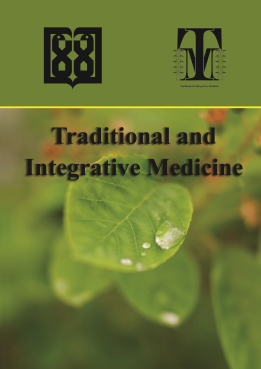Traditional Chinese Herbal, “Dandelion” and Its Applications on Skin-Care
Abstract
Dandelion (Taraxacum officinale) belongs to the Asteraceae or sunflower family. Its leaves, stems, and roots have been used in traditional Chinese herbal for a long time because dandelion has a wide range of pharmacological properties including anti-microbial, anti-viral, anti-inflammatory, and anti-infectious as well as anti-oxidation especially in the dandelion root extract which is the most medicinal value. A clinical study of dandelion extracts on skin acne and a simple preparation method of the dandelion extract would be discussed since the dandelion extract has low toxicity on the skin, even is non-toxic based on the British Herbal Pharmacopoeia recommendation.
Me & Qi. Dandelions, 2020. Accessed 29 Aug 2020.
Sharma K, Zafar R. Simultaneous estimation of taraxerol and taraxasterol in root callus cultures of Taraxacum officinale Weber. Int J Pharmacogn Phytochem Res 2014;6:540-546.
Arpadjan S, Celik G, Taşkesen S, Güçer S. Arsenic, cadmium and lead in medicinal herbs and their fractionation. Food Chem Toxicol 2008:46:2871-2875.
He W, Han H, Wang W, Gao B. Anti-influenza virus effect of aqueous extracts from dandelion. Virol J 2011;8:538.
Ovadje P, Chatterjee S, Griffin C, Tran C, Hamm C et al. Selective induction of apoptosis through activation of caspase-8 in human leukemia cells by dandelion root extract. J Ethnopharmacol 2011;133:86-91.
Seo SW, Koo HN, An HJ, Kwon KB, Lim BC et al. Taraxacum officinale protects against cholecystokinin-induced acute pancreatitis in rats. World J Gastroenterol 2005;11:597-599.
Koo HN, Hong SH, Song BK, Kim CH, Yoo YH et al. Taraxacum officinale induces cytotoxicity through TNF-alpha and IL-1alpha secretion in Hep G2 cells. Life Sci 2004;74:1149-1157.
Choi UK, Lee OH, Yim JH, Cho CW, Rhee YK et al. Hypolipidemic and antioxidant effects of dandelion (Taraxacum officinale) root and leaf on cholesterol-fed rabbits. Int J Mol Sci 2010;11:67-78.
Ivanov IG, Vrancheva RZ, Marchev AS, Petkova NT, Aneva IY et al.. Antioxidant activities and phenolic compounds in Bulgarian Fumaria species. Int J Curr Microbiol App Sci 2014;3:296-306.
Xie P, Huang L, Zhang C, Ding S, Deng Y et al. Skin-care effects of dandelion leaf extract and stem extract: Antioxidant properties, tyrosinase inhibitory and molecular docking simulations. Ind Crops Prod 2018;111:238-246.
Yang Y, Li S. Dandelion Extracts Protect Human Skin Fibroblasts from UVB Damage and Cellular Senescence. Oxidative medicine and cellular longevity 2015;2015:619560.
Hu C, Kitts DD. Dandelion (Taraxacum officinale) flower extract suppresses both reactive oxygen species and nitric oxide and prevents lipid oxidation in vitro. Phytomedicine 2005;12:588-597.
Chatterjee SJ, Ovadje P, Mousa M, Hamm C, Pandey S. The efficacy of dandelion root extract in inducing apoptosis in drug-resistant human melanoma cells. Evid Based Complement Alternat Med 2011;2011:129045.
Jeon HJ, Kang HJ, Jung HJ, Kang YS, Lim CJ et al. Anti-inflammatory activity of Taraxacum officinale. J Ethnopharmacol 2008;115:82-88.
Mahr S. Dandelion, Taraxacum officinale, 2015. Accessed 29 Aug 2020.
Fan Y. Plant extraction liquid used in cosmetic used for inhibiting acnes, 2011. Accessed 29 Aug 2020.
The best organic skin care. Amazing Benefits of Dandelion for the Skin, 2017. Accessed 29 Aug 2020.
WebMD. Dandelion, 2020. Accessed 29 Aug 2020.
Wirngo FE, Lambert MN, Jeppesen PB. The Physiological Effects of Dandelion (Taraxacum Officinale) in Type 2 Diabetes. Rev Diabet Stud 2016;13:113-131.
| Files | ||
| Issue | Vol 6, No 2, 2021 | |
| Section | Review Article(s) | |
| DOI | https://doi.org/10.18502/tim.v6i2.6794 | |
| Keywords | ||
| Dandelion Traditional chinese medicine Skin-care | ||
| Rights and permissions | |

|
This work is licensed under a Creative Commons Attribution-NonCommercial 4.0 International License. |




